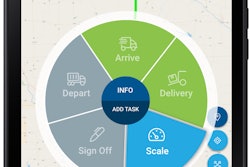 “If we don’t get a relapse” in coronavirus cases, “April will be the bottom” of the recent economic downturn, said Chris Pickett, chief strategy officer at Coyote Logistics. Indicators point to a recovery that’s already begun and that could continue through the end of next year, he and other analysts forecast. Fleets surveyed over the last week by CCJ are also optimistic about a freight rebound.
“If we don’t get a relapse” in coronavirus cases, “April will be the bottom” of the recent economic downturn, said Chris Pickett, chief strategy officer at Coyote Logistics. Indicators point to a recovery that’s already begun and that could continue through the end of next year, he and other analysts forecast. Fleets surveyed over the last week by CCJ are also optimistic about a freight rebound.The economic downturn wrought by the global spread of COVID-19 and corresponding state shutdown orders potentially has hit its lowest point, said analysts over the past week, as freight demand has entered recovery and is forecast to continue on that front through the end of next year.
Freight volumes seemingly have “found the floor,” said Chris Pickett, chief strategy officer at Coyote Logistics – a subsidiary of parcel giant UPS (No. 1 on CCJ‘s Top 250). “We think it’s an inflationary run from here,” potentially lasting for the next 18 months, Pickett continued, barring another virus outbreak that spurs another economic slowdown. He spoke in a webinar alongside three other Coyote analysts on Thursday, May 21.
“From here forward, we think things are going to improve,” said FTR economist Bill Witte, who spoke in an FTR State of Freight webinar Thursday, May 14.
After the “historically awful second quarter” ends, said Witte, the economy should expand next quarter and continue to grow. He predicts a 22% drawback in GDP in the second quarter, followed by a 16.2% jump in the third quarter. He predicts growth in the 5% range for every quarter next year. Witte noted his forecast trends optimistic.
He also said much of economists’ work amid the COVID-19 crisis is “guesswork,” with several wildcards that could alter forecasts: Policies and relief packages from Washington, a flare-up in virus cases and the looming presidential election.
FTR has tracked a recovery index since the economic crash in March, and it hit bottom in mid- to late-April, said Avery Vise, FTR’s vice president of trucking. He said growth has been slow so far, with upward trends lasting a few days before plateauing for a few days. “We expect acceleration to continue over time as more states re-open,” he added.
The American Trucking Associations this week said freight tonnage plunged in April by 12.2% from the month prior — the largest month-to-month dip since a labor strike in 1994. “As the nation starts taking small steps toward reopening, we should see some modest improvements in the freight market, but the size of April’s decline gives us an idea of how long the road back may be,” said ATA Chief Economist Bob Costello.
Pickett predicts that rates will continue to firm up in the coming weeks and months, too, as freight demand grows and capacity exits the industry. Unlike in the 2008 crash, when fuel prices soared and supply shrank as carriers folded, trucking supply this year remained in tact. That contributed to the steep drop the spot market experienced in recent months, said Pickett.
With both consumer consumption and industrial production picking up, and with capacity likely to contract in the coming months, per-mile rates should “ride the wave of a post-recession recovery into another year of an inflationary spot market starting as early as the first quarter of 2021,” Pickett said.













